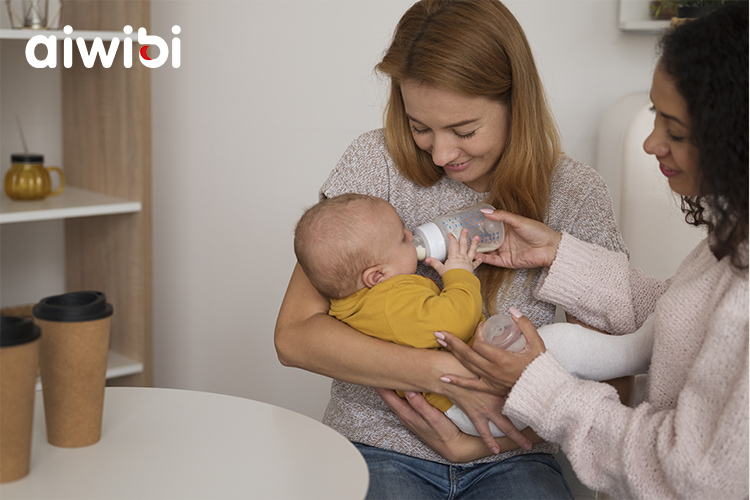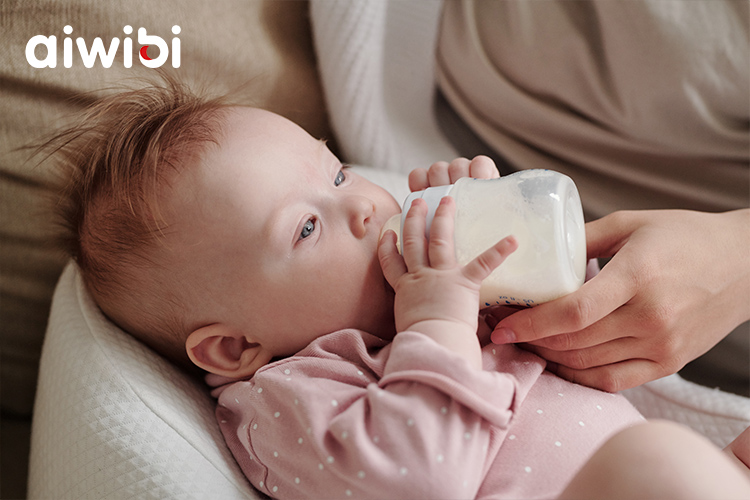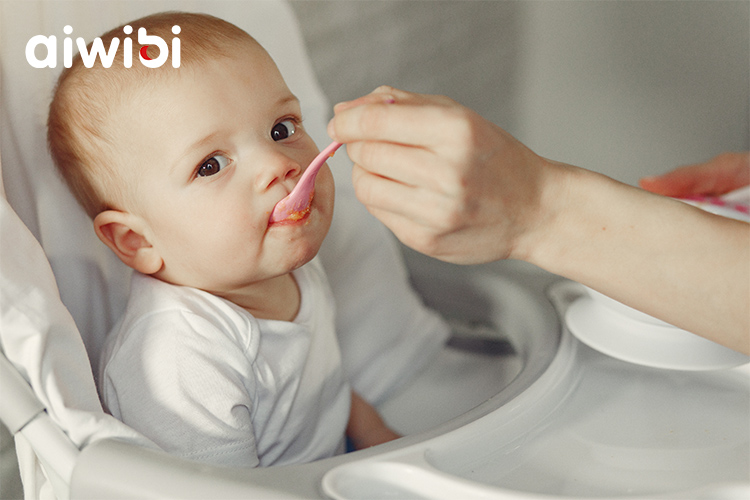وضعية طفلكِ أثناء الرضاعة بالزجاجة تؤثر بشكل كبير على راحته ورفاهيته. قد لا تكون العديد من الطرق المصورة في وسائل الإعلام مثالية لطفلكِ. على سبيل المثال، تجنبي وضع الطفل بشكل مسطح على حضنكِ. من الصعب حتى على البالغين الشرب أثناء الاستلقاء بشكل مسطح، فما بالك بالرضع. قد تؤدي هذه الوضعية إلى ارتجاع المريء أو التهابات الأذن. إليكِ وضعيات أفضل للرضاعة بالزجاجة:
• وضعية المهد: تتضمن هذه الطريقة التقليدية وضع رأس الطفل على ثنية ذراعكِ. يجب أن تمسك رأس الطفل والجزء العلوي من جسمه بزاوية طفيفة، ويفضل أن يكون قريبًا من صدركِ.

• الوضعية المستقيمة: أمسكي طفلكِ شبه جالس، بحيث يكون رأسه مستندًا إلى صدركِ أو في ثنية ذراعكِ. هذه الوضعية مفيدة بشكل خاص للرضع المعرضين لارتجاع المريء. تأكدي من أن الحليب يملأ الحلمة بالكامل لمنع دخول الهواء، مما قد يسبب الغازات أو ارتجاع المريء.

• دعم الوسادة: استخدمي وسادة رضاعة لرفع صدر طفلك ورأسه. هذا لا يحافظ على زاوية مثالية فحسب، بل يُريح ذراعيكِ أيضًا بينما يستقر الطفل في حضنكِ.

• تبديل الجانبين: سواءً كنتِ ترضعين طفلك رضاعة طبيعية أو رضاعة صناعية، فإن تبديل الجانبين يمنع تفضيل أي جانب. كما يُنظم تبديل الجانبين وتيرة الرضاعة بشكل طبيعي، ويمنح الطفل فرصة لتحديد ما إذا كان قد شبع أم لا قبل انتهاء الرضاعة.

مع نمو طفلك، قد يحاول حمل الزجاجة. إنه تفضيل شخصي، وليس مرحلة نمو. قد يحاول الطفل في عمر ستة أشهر. إذا فعل، دعيه يحاول، لكن ابقَ قريبة منه، وادعميه وراقبيه. ماذا لو لم يُبدِ الطفل أي اهتمام بحمل الزجاجة؟ طالما أنه قد وصل إلى مراحل نمو أخرى، مثل الوصول إلى الألعاب أو الإمساك بها، فمن الطبيعي تمامًا أن يرغب طفلك الأكبر في تقديم الزجاجة له.









